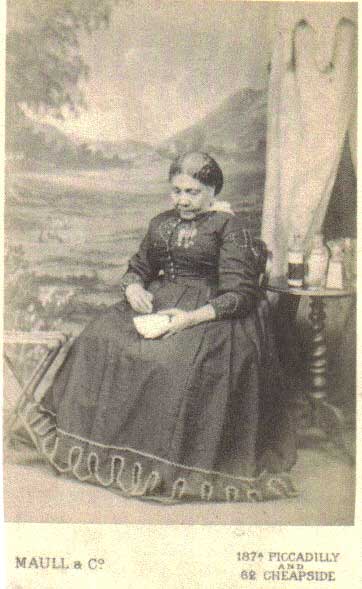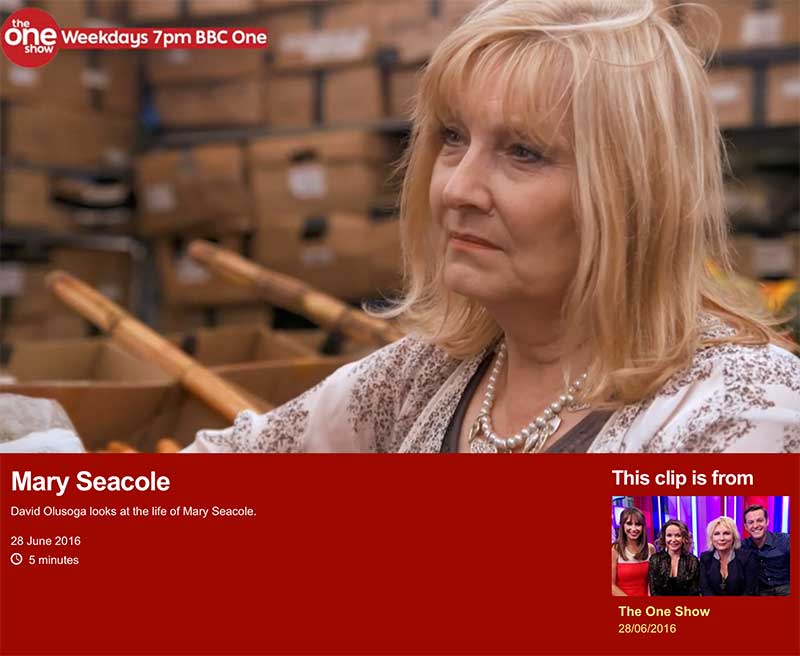Mary Seacole: Creole Doctress, Nurse and Healer
“In Crimea during 1854–5 Mary Seacole demonstrated that her home-grown Jamaican practice of hygiene, healthy food, natural remedies and kindness – had a lot more to offer than traditional medicine, making her nursing practice a far more modern, holistic one that people might have imagined.”
The Creole Doctresses of Jamaica


Herbal Medicine vs Traditional Allopathic Treatment

The Wonderful Adventures of Mrs Seacole in Many Lands

What the British Army Said About Mary’s Nursing Skills
19 July 1855 MORNING ADVERTISER
‘A native of Jamaica she has travelled extensively on the American continent, and has acquired great experience in the treatment of cases of cholera and diarrhoea. Her powders for the latter epidemic are now so renowned that she is constantly beset with applications, and it must be stated, to her honour, that she makes no charge for her powders.’
24 August 1855 DIARY WILLIAM MENZIES CALDER, assistant staff surgeon 49th regiment
‘Her fame as a doctress for cholera and diarrhoea are spread all over the camp. Her powders for diarrhoea and cholera seem to have worked miracles, she used them with great benefit in Panama. They certainly cannot be less efficacious than all our drugs etc. for cholera, from all the varieties of which I have yet seen little benefit here.’
13 March 1856 Gen. Sir Richard Denis Kelly, in AN OFFICER’S LETTERS TO HIS WIFE DURING THE CRIMEAN WAR
‘Among the rest was a black lady from Jamaica, Mrs. Seacoal, who for some time past has established a restaurant near Kadikoi. She was also principal medical officer to the army works corps or ci-devant navvies, and at the time of the cholera last summer used to prescribe pomegranate juice, which was an almost never-failing specific.’
31 January 1857 ‘REMINISCENCES OF THE WAR IN THE EAST BY A MILITARY CHAPLAIN’
‘She held a levee every morning after breakfast, when you were sure to meet with sick men of every nation, belonging to the Land Transport, whose camp was near at hand waiting for a preventive against cholera, fever or the other incidental illnesses of the place.’
11 April 1857 THE TIMES
Her hut was surrounded every morning by the rough navvies and Land Transport men, who had faith in her proficiency in the healing art, which she justified by many cures and by removing obstinate cases of diarrhoea, and similar camp maladies.’


So what exactly were these ingredients in Mary’s 1850s medicine chest?
Mustard poultices would ease stiffness of joints (in the neck and spine) and would warm the treated areas, easing symptoms like cramps.
It is interesting to note here that Mary massaged in the mustard plasters and poultices, in relation to later testimony that she was a skilled masseuse and in the 1860s was called in to give massages to Alexandra Princess of Wales to ease her crippling rheumatic pain.
Cinnamon bark was widely used along with logwood and mahogany bark in Jamaica as an astringent. Ground down with a pestle and mortar it was a used to relieve flatulence and in the treatment of diarrhoea and mild gastro-intestinal disorders. When it came to the thirst cravings of patients suffering from typhoid and cholera, Mary gave her patients ‘water in which cinnamon had been boiled’ as a sort of herbal tea. The fact that the water was boiled would be a lot safer, given the unsanitary conditions the army were enduring. Eyewitness accounts from the Crimea certainly testify to her using decoctions from pomegranates and cinnamon bark.

Mercury: Mary says that she applied mercury externally. It was formerly employed in this way in the treatment of syphilis and chronic skin diseases – neither of which seem to have been used by Mary in this way when she was in Panama or Crimea. Although some mercuric oxides have antibacterial properties we don’t know what kind of mercury Mary used.
Calomel: Calomel is another name for mercurous chloride. Depending on dosage, it has the same toxicity as mercury. It was used primarily as a purgative by British army surgeons in Crimea and was also a treatment for syphilis, psoriasis and eczema.


In Crimea during 1854–5 Mary Seacole demonstrated that her home-grown Jamaican practice of hygiene, healthy food, natural remedies and kindness – had a lot more to offer than traditional medicine, making her nursing practice a far more modern, holistic one that people might have imagined. Back in England after the war, she later offered her own remedies free during a Cholera epidemic in London.
Here is a short feature that I did with black historian David Olugosa for BBC 1’s The One Show in which we discussed Mary’s herbal remedies
You may also like
George Bridgetower: The Black Violinist at the Court of the Prince of Wales
George BridgetowerThe Black Violinist at the Court of the Prince of Wales Haydn, it is said, had given young George violin lessons and was the first to take note of his prodigious musical gifts. The Extraordinary life of George Augustus Polgreen...
Sarah Forbes Bonetta: the Captive African Princess Gifted to Queen Victoria
In its Christmas Special for December 2017 the ITV series Victoria featured the story of Sarah Forbes Bonetta, a captive African princess who was brought to the court of Queen Victoria. She has frequently been described as the Queen’s goddaughter’ but this is not in fact true…


